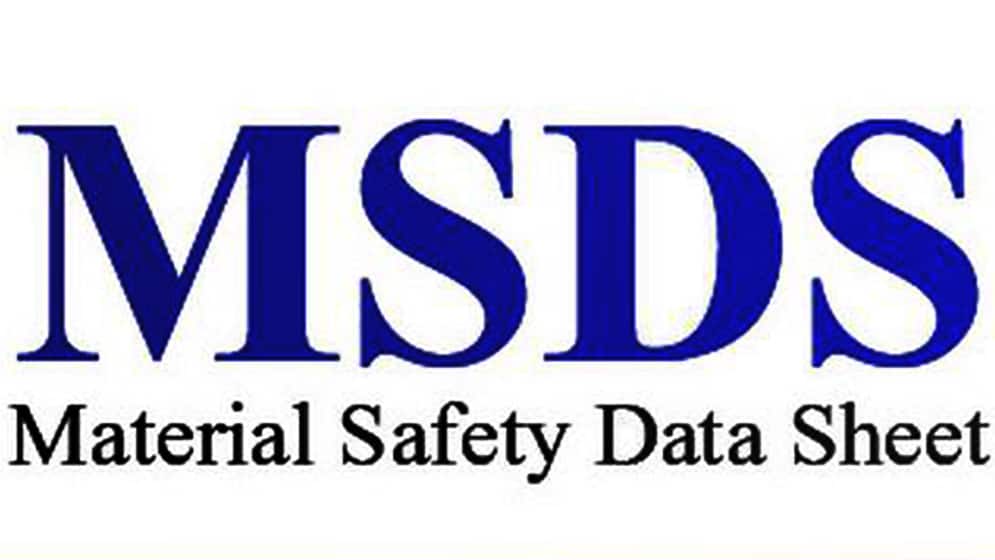- Curved Lithium Polymer battery
- Fast Charge Polymer Battery
- Flexible Polymer Lithium Battery
- Ultra-thin Polymer Battery
/ Blog / Battery Knowledge /
How to handle MSDS test reports for lithium-ion batteries, lithium polymer batteries, and nickel-hydrogen batteries
30 Dec, 2021
By hoppt

How to handle MSDS test reports for lithium-ion batteries, lithium polymer batteries, and nickel-hydrogen batteries
MSDS/SDS is one of the main methods of substance information transmission in the chemical supply chain. Its content involves the entire life cycle of chemicals, including chemical hazard information and safety protection recommendations. It provides necessary measures for human health and environmental safety protection for relevant personnel exposed to chemicals and provides valuable, comprehensive suggestions for appropriate personnel in different links.
At present, MSDS/SDS has become an essential means for many advanced chemical companies to conduct chemical safety management, and it is also the focus of corporate responsibility and government supervision clearly stated in the new "Regulations on the Safety Management of Hazardous Chemicals" (Order 591) of the State Council.
Therefore, the correct MSDS/SDS is essential for enterprises. It is recommended that companies entrust a professional to provide MSDS/SDS services for environmental testing Wei certification.
The importance of battery MSDS report
There are generally several reasons for battery explosion, one is "abnormal use," for example, the battery is short-circuited, the current passing through the battery is too large, the non-rechargeable battery is taken to charge, the temperature is too high, or the battery is used The positive and negative poles are reversed.
The other is "self-destruction for no reason." It mainly occurs on counterfeit brand-name batteries. This kind of explosion is not because of flammable and explosive substances in the storm. Still, because the internal material of the fake battery is impure and shoddy, which causes the gas to be generated in the battery and the internal pressure increases, it is accessible to "self-explode."
In addition, improper use of the charger can easily cause the battery to explode for rechargeable batteries.
For this reason, battery manufacturers produce batteries for sale in the market. Their products should follow relevant international standards, with MSDS reports being successfully sold in domestic and foreign markets. The battery MSDS report, as the primary technical document for transmitting product safety information, can provide battery hazard information, as well as technical information that is helpful for emergency rescue and emergency handling of accidents, guide the safe production, safe circulation, and safe use of batteries, and ensure safe operation.
The quality of the MSDS report is an important indicator to measure the strength, image, and management level of a company. High-quality chemical products with high-quality MSDS reports are bound to increase more business opportunities.
Battery manufacturers or sellers need to provide customers with a professional battery MSDS report to reflect the physical and chemical parameters of the product, flammability, toxicity, and environmental hazards, as well as information on safe use, emergency care and disposal of leakage, laws, and regulations, etc., to help users better control of risks. The battery equipped with high-quality MSDS can improve the safety of the product, and at the same time, make the product more international and improve the competitiveness of the product. Chemical safety technical description: This document is required to understand the product's characteristics during general transportation.
Product description, hazardous characteristics, relevant regulations, permitted uses and risk management measures, etc." This basic information is included in the battery MSDS report.
At the same time, Article 14 of my country's "Administrative Measures for the Prevention and Control of Environmental Pollution by Electronic Wastes" stipulates that manufacturers, importers, and sellers of electronic and electrical products and electronic and electrical equipment shall disclose the lead, mercury, and Cadmium, hexavalent chromium, polybrominated biphenyls (PBB), polybrominated diphenyl ethers (PBDE) and other toxic and hazardous substances, as well as information that may have an impact on the environment and human health due to improper use or disposal, products or equipment, are discarded in an environmentally sound manner Tips on the method of utilization or disposal. This is also a requirement for battery MSDS reports and the transmission of relevant data.
The following are the commonly used battery MSDS report types:
- Various lead-acid batteries
- Various power secondary batteries (batteries for power vehicles, batteries for electric road vehicles, batteries for power tools, batteries for hybrid vehicles, etc.)
- Various mobile phone batteries (lithium-ion batteries, lithium polymer batteries, nickel-hydrogen batteries, etc.)
- Various small secondary batteries (such as laptop batteries, digital camera batteries, camcorder batteries, various cylindrical batteries, wireless communication batteries, portable DVD batteries, CD and audio player batteries, button batteries, etc.)



